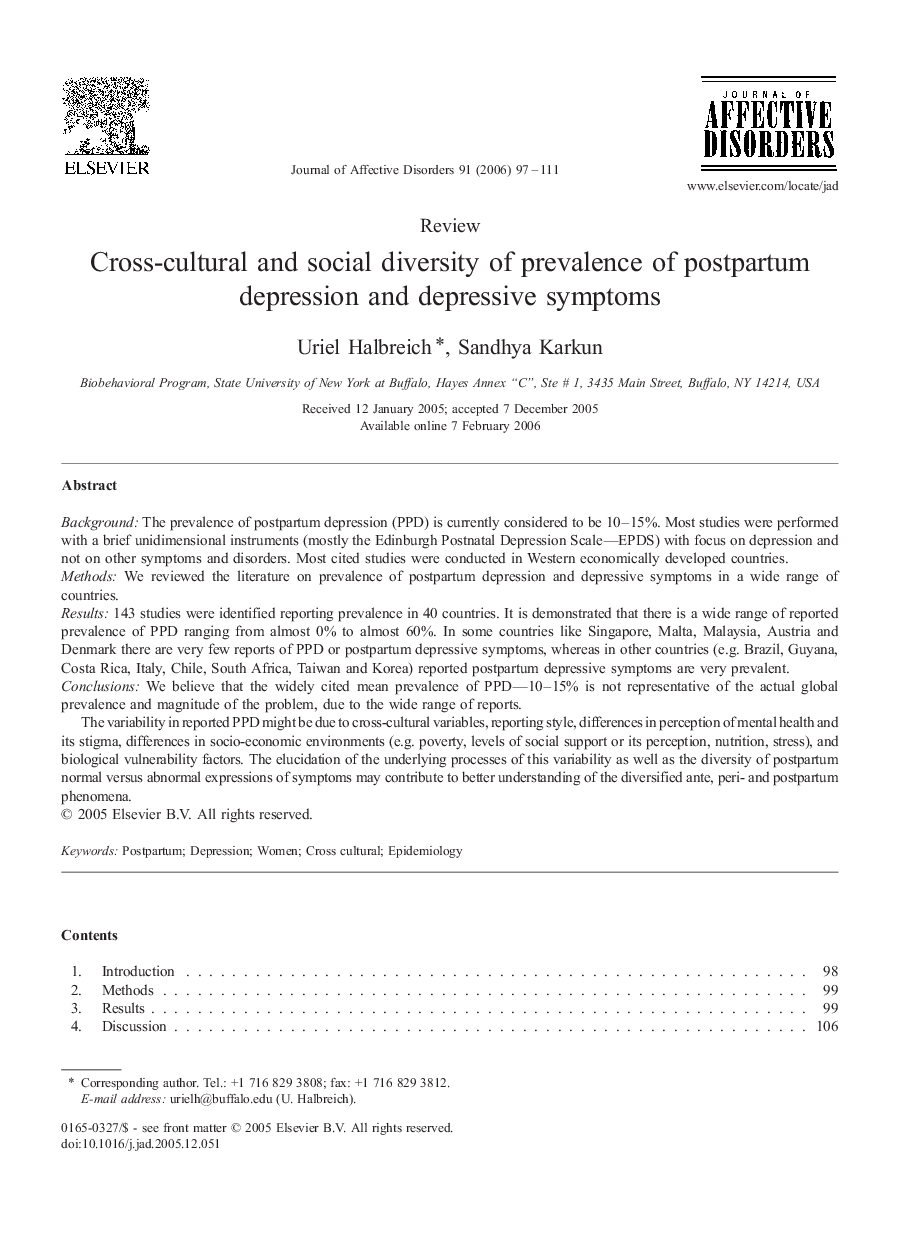| Article ID | Journal | Published Year | Pages | File Type |
|---|---|---|---|---|
| 4187999 | Journal of Affective Disorders | 2006 | 15 Pages |
BackgroundThe prevalence of postpartum depression (PPD) is currently considered to be 10–15%. Most studies were performed with a brief unidimensional instruments (mostly the Edinburgh Postnatal Depression Scale—EPDS) with focus on depression and not on other symptoms and disorders. Most cited studies were conducted in Western economically developed countries.MethodsWe reviewed the literature on prevalence of postpartum depression and depressive symptoms in a wide range of countries.Results143 studies were identified reporting prevalence in 40 countries. It is demonstrated that there is a wide range of reported prevalence of PPD ranging from almost 0% to almost 60%. In some countries like Singapore, Malta, Malaysia, Austria and Denmark there are very few reports of PPD or postpartum depressive symptoms, whereas in other countries (e.g. Brazil, Guyana, Costa Rica, Italy, Chile, South Africa, Taiwan and Korea) reported postpartum depressive symptoms are very prevalent.ConclusionsWe believe that the widely cited mean prevalence of PPD—10–15% is not representative of the actual global prevalence and magnitude of the problem, due to the wide range of reports.The variability in reported PPD might be due to cross-cultural variables, reporting style, differences in perception of mental health and its stigma, differences in socio-economic environments (e.g. poverty, levels of social support or its perception, nutrition, stress), and biological vulnerability factors. The elucidation of the underlying processes of this variability as well as the diversity of postpartum normal versus abnormal expressions of symptoms may contribute to better understanding of the diversified ante, peri- and postpartum phenomena.
